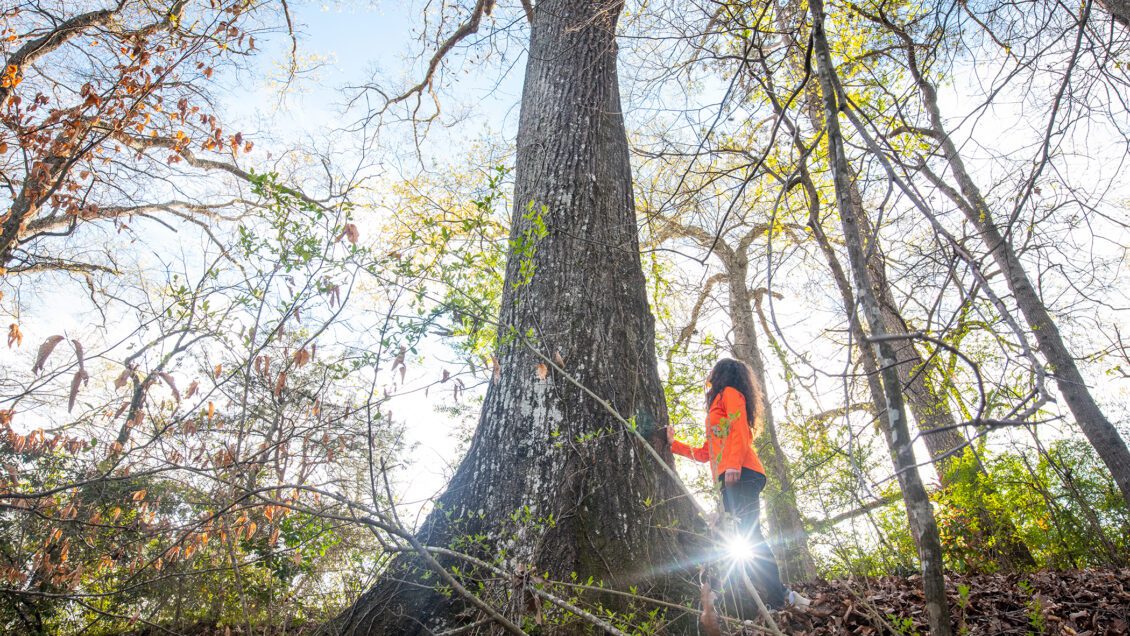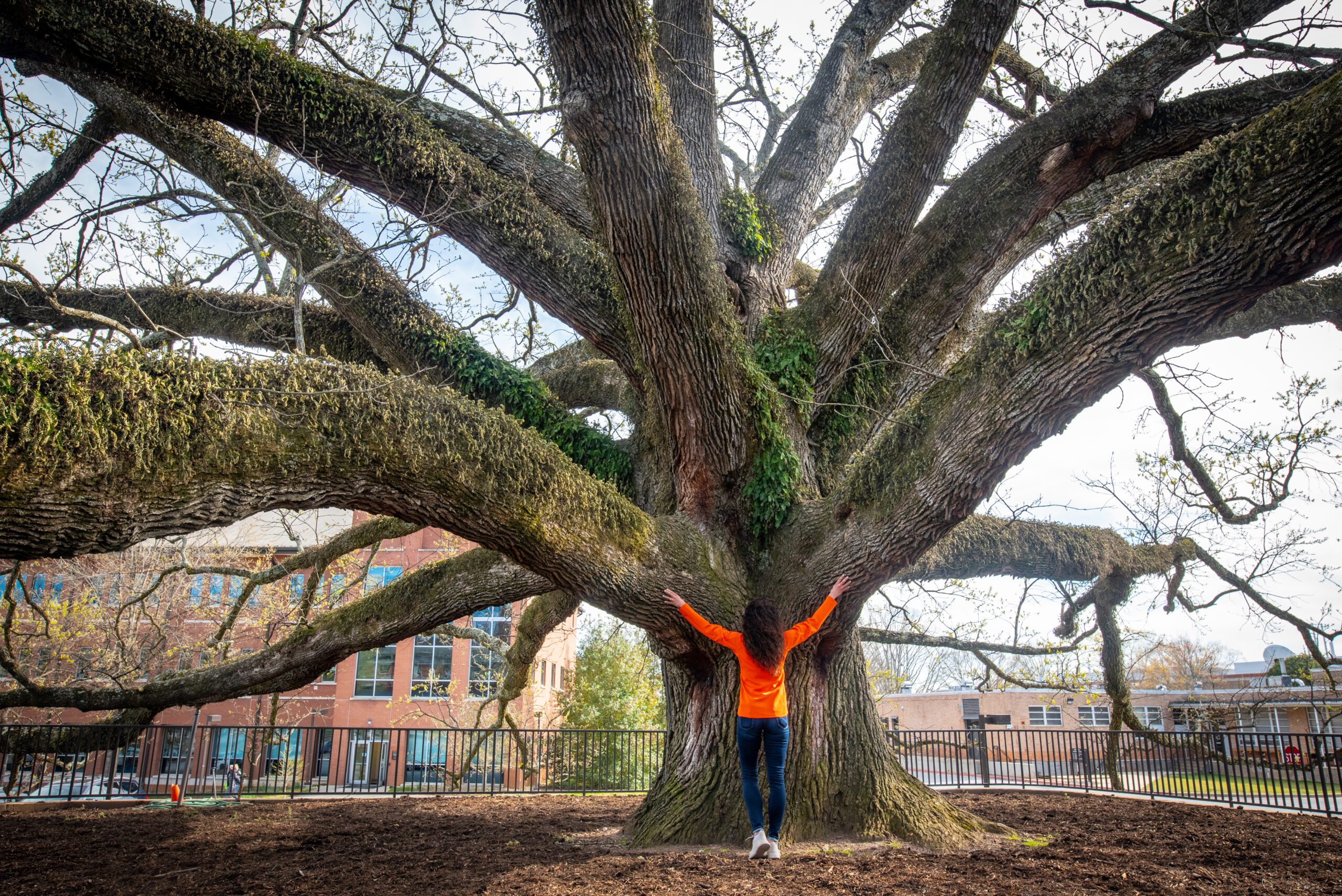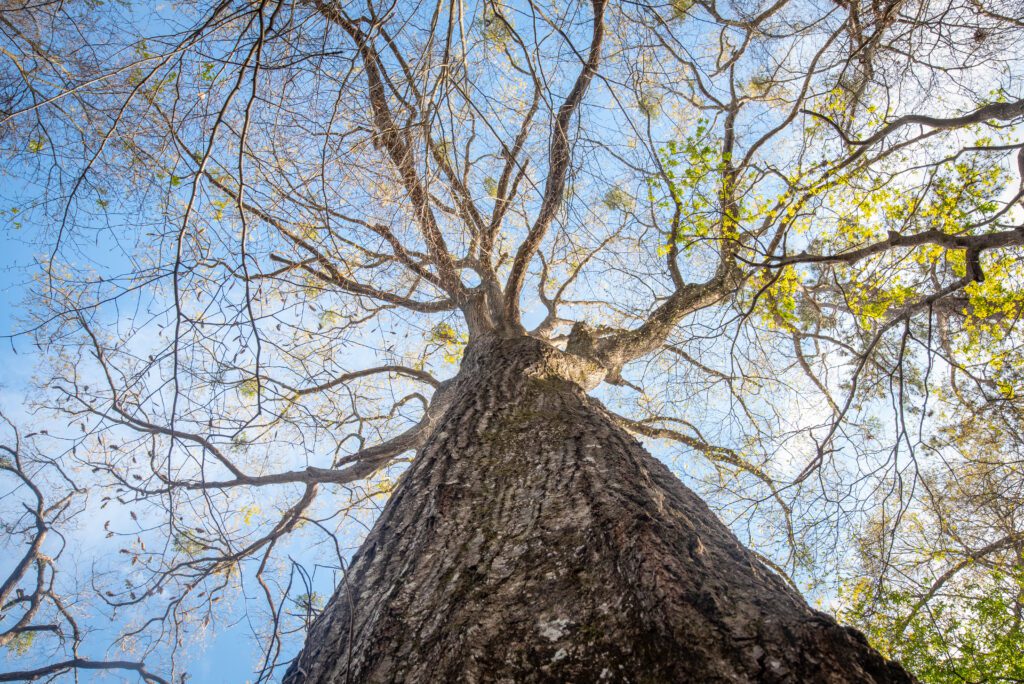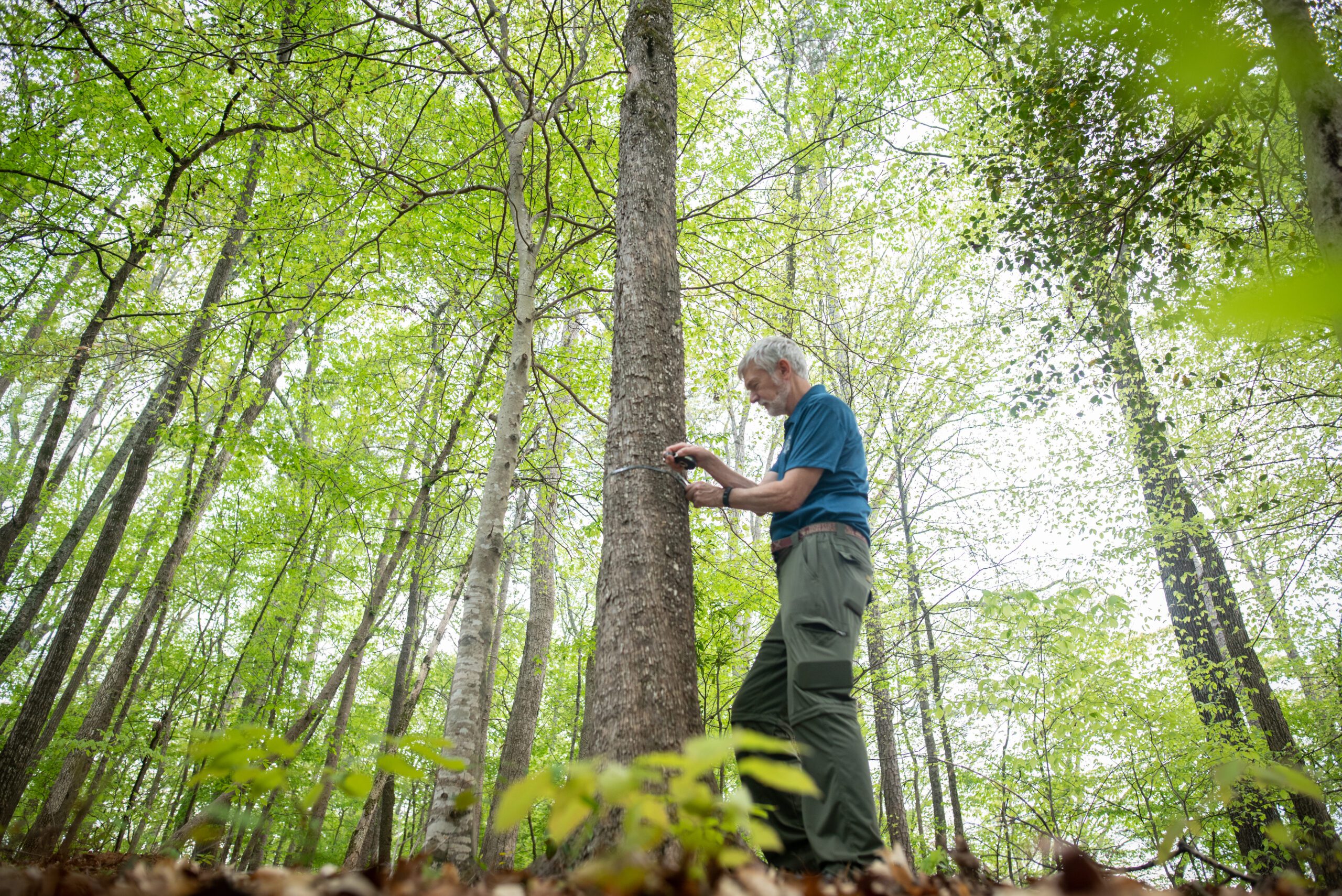
Clemson University is home to many champions: Three national champion football teams, a men’s golf national champion team and three national champion men’s soccer teams, to name a few, but it’s also home to a number of silent champions worth celebrating in April, which is recognized as Earth Month, a time for awareness and advocacy for the environment.
Scattered across Clemson’s immaculately manicured main campus, its adjoining 295-acre South Carolina Botanical Garden and the 17,500-acre Clemson Experimental Forest stand more than two dozen of the largest documented trees in the state of South Carolina, which are known as Champion Trees.
The trees belong to a colorful spectrum of species that include oaks, cypress, ash, fir, mimosa, pine and more. Some of these trees live hidden in the lush canopy of the South Carolina Botanical Garden or deep in the thick woods of the Clemson Experimental Forest, but several can be found hiding in plain sight on main campus.

The easiest to spot would likely be the Champion Bur Oak, known as the “Centennial Oak,” a gigantic presence with limbs longer than goalposts and wider than truck tires. It occupies a spot next to the parking lots between the Biosystems Research Complex building and Newman Hall on the main campus. More than 100 years old, it is thought to have been a sapling when Thomas Green Clemson IV included what would be Clemson University in his will of 1883. It lived a relatively quiet existence until it was named the Centennial Oak when Clemson celebrated its centennial in 1989. Today, it is 67 feet high and has a 104-foot branch spread.
The largest Black Oak in South Carolina lives a short walk from the Clyde V. Madren Conference Center next to the Fort Rutledge trail, in the woods that run parallel to the Lake Hartwell dike. Its massive trunk is 171 inches around, and it towers 91 feet over the runners and hikers who pass by it every day. Emeritus professor of forestry Victor Shelburne discovered the tree in 2016 with his local Boy Scout troop, which helped build the Fort Rutledge trail. He estimates it is at least 200 years old.

“A Black Oak that used to stand at the Episcopal Church in Clemson was the former state record holder, but it blew down in a storm, so we needed a new champion,” said Shelburne. “As we were building the Fort Rutledge trail, I said, ‘Dang, that’s a big Black Oak!’ I took the measurements and added it to the South Carolina state champion list since I was the state coordinator for champion trees at the time.”
Shelburne and his scouts also discovered the state champion Eastern Hophornbeam tree, located on the Treaty Oak trail that branches off West Cherry Road just before the bridge across Lake Hartwell. It stands 64 feet high and boasts a crown that spreads 35 feet among its crowded section of woods.
“Eastern Hophornbeam trees in our area aren’t typically that large,” said Shelburne. “They don’t react well to soil that has a lot of acid, so it tells you a lot about the geology here. You only find clusters of these trees occasionally in the Piedmont Forest.”

Shelburne says many of the champion trees in the South Carolina Botanical Garden are non-native to South Carolina and in need of remeasuring but technically still hold their respective titles. The trees in the Clemson Experimental Forest, which is the largest public university forest in the United States, have their own website.
Being documented as a Champion Tree doesn’t reap any monetary or material awards, but it does provide something the Clemson Family might value just as much: bragging rights.
“It’s mostly a fun thing,” said Shelburne, adding that there might be larger trees in South Carolina that aren’t documented, but Clemson’s trees stand as the champions until they are.
